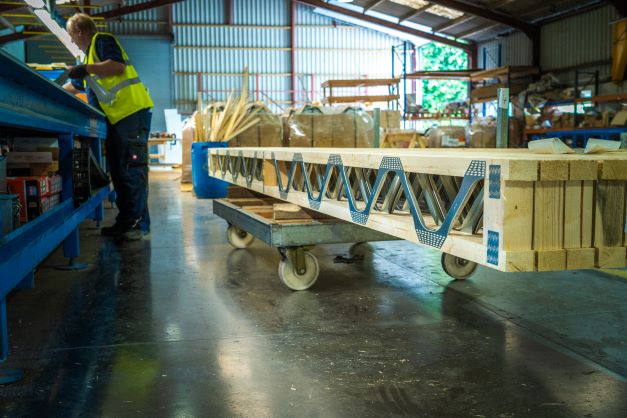We’re pleased to announce that our Posi-Joist and Connector Plates have become EPD (Environmental Product Declarations) verified in the UK market.
UK specifiers of MiTek’s Posi-Joist and Connector Plates can now easily assess and quantifiably demonstrate the environmental credentials, impact, and benefits of these two market leading products.
EPD has become the standardised and respected method of reporting and communicating LCA (Life Cycle Assessment) results to customers and industry.
The move is part of a wider journey by MiTek to tackle the climate crisis head-on, not just in how it operates, but in its products, which are used by millions across the globe to shape the built environment.

MiTek is one of the first to be able to offer the industry EPD information in the specification of products used to manufacture metal-web joists, and trusses. Speaking of the news Jimmy Close, UK Business Development Director and a representative on MiTek’s Global Focus Group for sustainability said:
“This is an important step for us and the wider industry in tackling the big sustainability issues impacting global communities.
“Although creating an EPD is a voluntary activity it’s been an ambition of ours to empower customers and provide transparency in supply chains. We’re very pleased to be able to offer our customers this information as they make informed and ethical choices about the products’ they use in construction projects today.”
Providing information on the climate impact of MiTek’s solutions widens the customers’ choice when it comes to product selection and decision-making. Over the coming months MiTek looks forward to expanding the EPD process to cover its manufacturing operations not just here in the UK but throughout Europe, covering Sweden and the Czech Republic.

The process was conducted by BRE Global (Building Research Establishment) on behalf of MiTek and included a full LCA (Life Cycle Assessment) of MiTek’s Posi-Joist and unique Connector Plates. The initial scope covered the product stage (cradle to gate), which MiTek hopes to expand to cover cradle to grave in conjunction with it’s fabrication and supply chain partners.
Jimmy adds: “Going through this process is another positive step forward in understanding the CO2 emissions and climate impact of our products.
“The process will ultimately help us to drive further innovations towards environmental impact reduction of our products and services.”
To view the EPD’s click here or visit Greenbook Live, or the ECO Platform, where results are publicly listed in Europe. They are also hosted in BRE’s LINA portal for people to download.
More info
What does an EPD contain?
The EPD contains information about the product and its potential environmental impacts and benefits:
- Technical information: Relevant product data and information
- LCA information: Environmental impacts, e.g. Global Warming Potential, Cumulative Energy Demand, Acidification Potential, but also a description of the LCA process (data, methods, assumptions)
- Other relevant environmental information (e.g. VOCs, hazardous materials, etc.)
- Review and verification information: Information on the LCA consultant and the EPD program operator, and the external 3rd party EPD verifier
The EPD enables specifiers to quantifiably demonstrate the environmental performance of a product, while Lifecycle Assessment is used to total up the environmental impact of a products supply chain.
EPD are an incredibly important industry marker of a products environmental impact, and more specifically its GWP (Global Warming Potential), which a products performance is ultimately scored on. The scope covers everything from raw materials supply, to transport, and manufacturing.
About BRE in the UK
BRE Global is internationally recognised for its expertise in LCA and pioneering work in the environmental evaluation of construction products for whole building assessment and other related schemes (BREEAM, The Green Guide to Specification, IMPACT, etc.).
